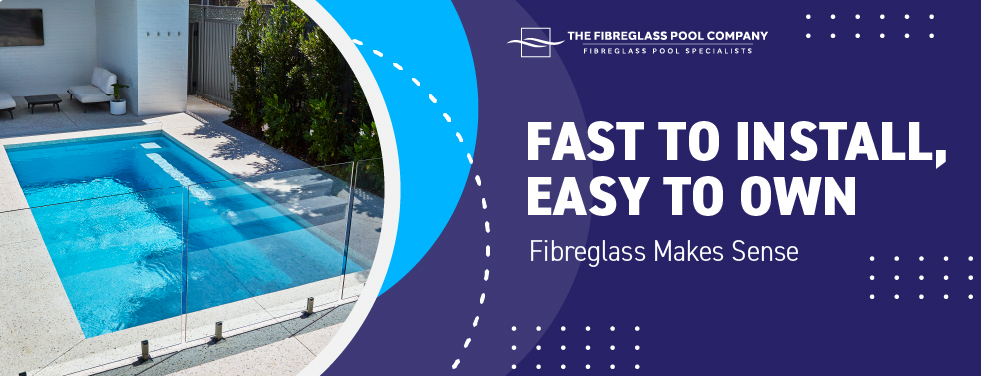A practical pool maintenance schedule keeps your water clean, safe, and sparkling all year round. By setting a routine for cleaning, chemical balancing, and equipment checks, you can prevent costly repairs and ensure your pool is always ready for a swim. A clear schedule reduces stress, saves time, and prolongs the life of your pool and filtration system.
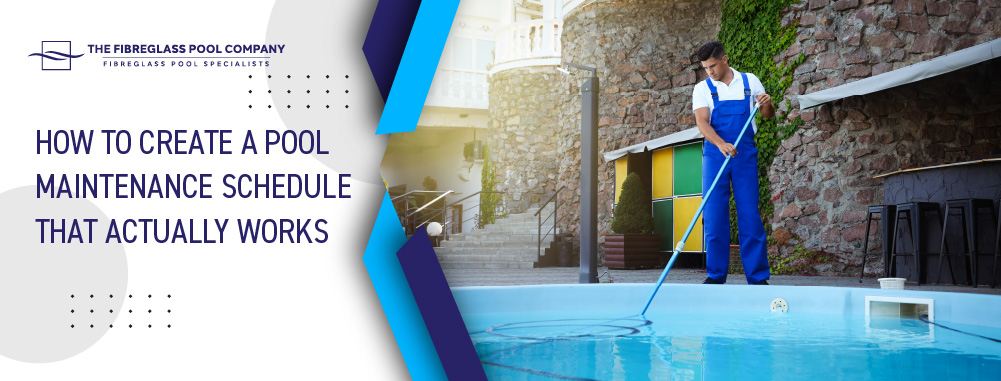
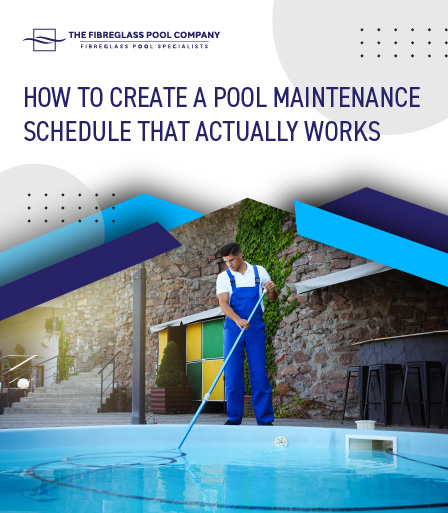
Why You Need a Pool Maintenance Schedule
Regular maintenance is the key to enjoying a healthy, beautiful pool. Without a proper schedule, issues such as cloudy water, algae growth, and equipment wear can develop quickly.
- Prevent Chemical Imbalance: Consistent testing and treatment avoids unsafe swimming conditions.
- Extend Equipment Lifespan: Pumps, filters, and heaters last longer when maintained regularly.
- Save Time and Money: A proactive approach reduces emergency fixes and expensive repairs.
A structured pool maintenance schedule gives homeowners peace of mind and ensures the pool is always ready to enjoy.
Weekly Pool Maintenance Tasks
Weekly tasks form the backbone of any effective pool maintenance schedule. These actions keep water clean, clear, and chemically balanced.
Skimming and Debris Removal
Remove leaves, hair, insects, and other debris from the water surface using a skimmer net. This prevents debris from sinking and clogging your pool filter.
- Skim daily or at least every other day for heavily used pools.
- Empty skimmer baskets weekly to maintain water flow.
Checking and Adjusting Chemical Levels
Test and balance your pool chemicals weekly. Key measures include:
- Chlorine or Sanitiser Levels: Maintain a safe range to kill bacteria and algae.
- pH Levels: Keep between 7.2 and 7.6 to prevent skin irritation and scaling.
- Alkalinity and Calcium Hardness: Stabilise water to protect surfaces and equipment.
Using a reliable pool test kit or digital tester ensures accurate readings.
Brushing and Vacuuming
Brushing pool walls, steps, and corners removes algae and dirt that can accumulate in less visible areas. Vacuuming the pool floor prevents debris from settling and reduces strain on your filtration system.
- Brush walls weekly.
- Vacuum manually or with an automatic cleaner depending on pool size.
Monthly Pool Maintenance Tasks
Monthly tasks help address deeper maintenance issues that weekly routines may miss.
Filter Inspection and Cleaning
Check your pool filter for dirt and debris. Depending on the type of filter, monthly care may include:
- Sand Filters: Backwash as needed.
- Cartridge Filters: Remove and rinse cartridges.
- DE Filters: Inspect grids and replace DE powder.
Equipment Checks
Inspect pumps, heaters, and chlorinators for proper operation. Look for leaks, unusual noises, or pressure changes that could indicate problems. Early detection prevents costly repairs.
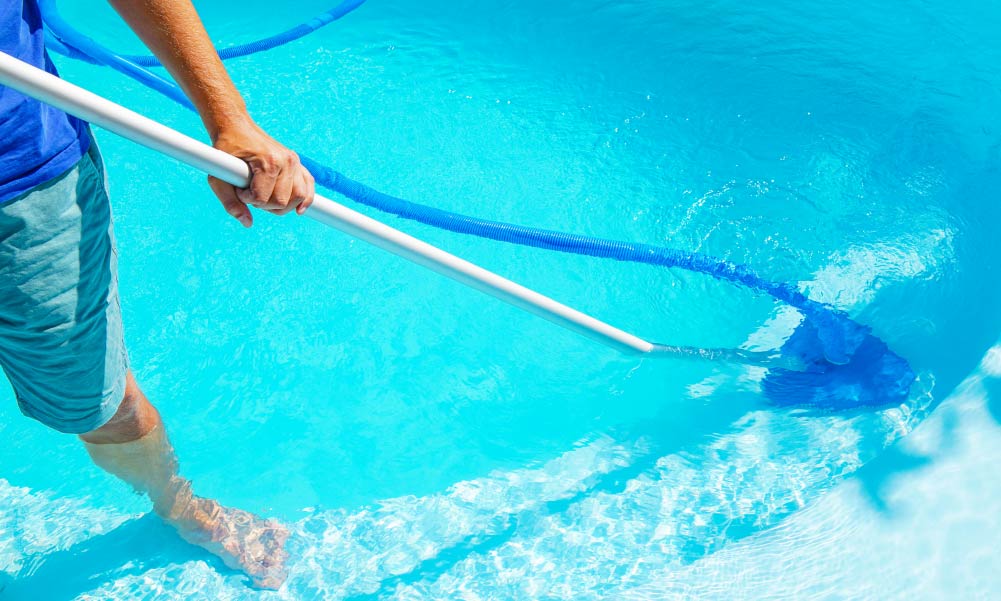
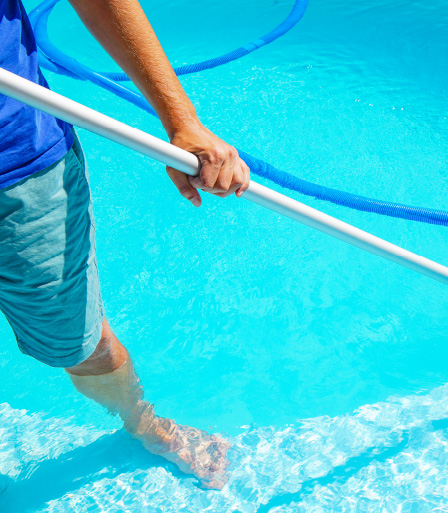
Shock Treatment
Shock your pool monthly to remove contaminants that regular chlorination might not address. This is especially important after heavy use or storms.
Seasonal Pool Maintenance
Seasonal maintenance aligns your schedule with changes in weather, pool usage, and water chemistry.
Summer Maintenance
During peak swimming season:
- Test chemical levels more frequently, ideally twice weekly.
- Skim, vacuum, and brush daily in busy pools.
- Monitor water temperature and top up water lost to evaporation.
Winter Maintenance
In cooler months, focus on protecting equipment and reducing algae growth:
- Reduce pump and filtration runtime, but maintain circulation.
- Keep the pool covered when not in use to prevent debris accumulation.
- Lower chemical dosages, but maintain pH and sanitizer balance.
Pre-Season Opening
When reopening your pool after winter:
- Remove covers and debris.
- Rebalance water chemistry.
- Inspect all equipment and perform any necessary repairs.
- Shock the pool to remove algae and contaminants.
End-of-Season Closing
Proper pool closing prolongs equipment life and prevents water quality issues:
- Clean and vacuum thoroughly.
- Lower water levels if needed.
- Winterise pumps, heaters, and filters.
- Add algaecide and stabiliser before covering.
Creating Your Personalised Pool Maintenance Schedule
Every pool is different, so customise your schedule based on your pool type, usage, and local conditions.
Step 1: Assess Your Pool
- Pool size, shape, and depth.
- Filter type (sand, cartridge, or DE).
- Number of swimmers and pets.
Step 2: Plan Weekly Tasks
Assign days for skimming, brushing, vacuuming, and chemical checks. Keeping a checklist can simplify maintenance and prevent tasks from being overlooked.
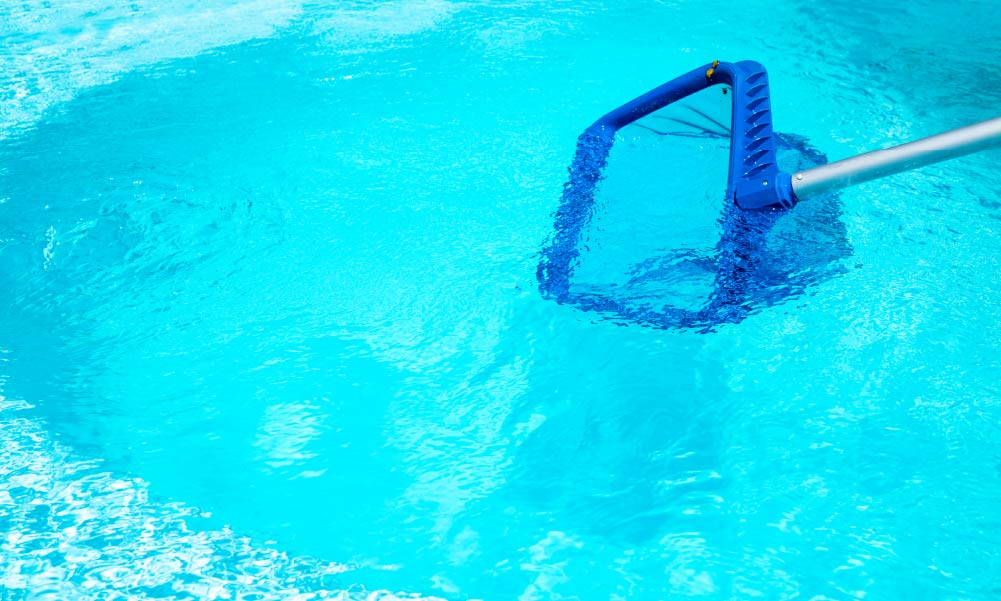
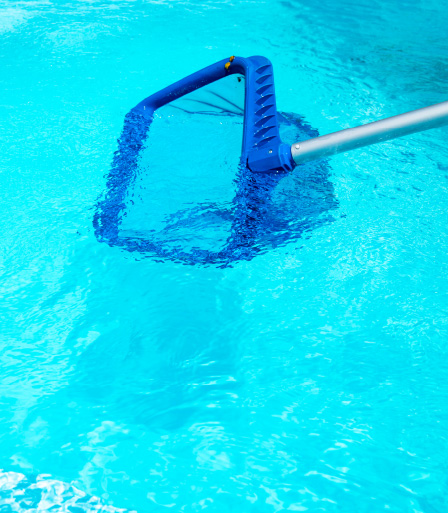
Step 3: Plan Monthly Tasks
Set reminders for filter inspections, shock treatments, and equipment checks. Digital calendars or pool maintenance apps can help stay organised.
Step 4: Include Seasonal Adjustments
Adjust maintenance frequency and procedures according to summer, winter, and transitional periods. Consider more frequent chemical checks in hot weather or after heavy rainfall.
Step 5: Track and Review
Maintain a log of chemical levels, filter cleaning, and any repairs. Tracking your pool’s history helps identify patterns and prevent recurring problems.
Tips for Making Your Pool Maintenance Schedule Work
A schedule only works if it is realistic and easy to follow.
- Consistency is Key: Stick to the plan; skipping tasks can compound issues.
- Use Tools and Technology: Automatic cleaners, timers, and apps simplify the routine.
- Delegate Tasks: Share duties among family members or hire professional help for complex maintenance.
- Stay Educated: Pool technology and chemicals evolve; keeping up-to-date helps maintain water quality.
By implementing these tips, maintaining a pool becomes a manageable and even enjoyable task.
Benefits of a Well-Planned Pool Maintenance Schedule
- Cleaner Water: Reduces algae, bacteria, and debris accumulation.
- Safer Swimming: Proper chemical balance prevents irritation and infections.
- Longer Equipment Life: Regular cleaning and inspections reduce wear and tear.
- Cost Savings: Preventative maintenance avoids expensive repairs or premature equipment replacement.
- Less Stress: Clear tasks and a set routine simplify pool care.
Common Mistakes to Avoid
Even with a schedule, some pitfalls can undermine pool maintenance:
- Ignoring Seasonal Adjustments: Summer and winter have different requirements.
- Skipping Chemical Checks: Small imbalances can lead to cloudy water or equipment damage.
- Neglecting Filters: Clogged filters reduce circulation and can strain pumps.
- Overcomplicating the Routine: A complicated schedule can be difficult to follow consistently.
Avoiding these mistakes ensures your pool maintenance schedule remains effective and practical.
Conclusion
Creating a pool maintenance schedule that actually works involves planning weekly, monthly, and seasonal tasks. From skimming and chemical balancing to filter care and equipment checks, consistency is key. A well-structured routine prevents problems, saves time and money, and keeps your pool sparkling and inviting year-round.
By assessing your pool, customising your schedule, and staying disciplined with regular maintenance, you can enjoy worry-free swimming without unexpected repairs or chemical issues. With a simple yet comprehensive plan, pool ownership becomes easier, more enjoyable, and highly rewarding.

